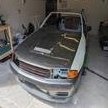I Think My Alternator Is Dead, Need Advice
Announcements
-
Similar Content
-
Latest Posts
-
By joshuaho96 · Posted
Lots of people. Could be a lot of things like people have said. Either the heater hose/pipe, the turbo coolant return that wraps around the back of the engine, or a core plug. I have seen all three. If you want me to guess wildly though I would bet it's one of those hoses for the turbo coolant return. Or the brazing/welding for the Y- section has failed. Get a borescope down there to be 100% sure. -
By Dose Pipe Sutututu · Posted
FWIW, I've aerated oil, and cams snapped. You can figure out the rest 🥲 -
By Murray_Calavera · Posted
Depending on the hose, sometimes engine out is the easiest option
-




Recommended Posts
Create an account or sign in to comment
You need to be a member in order to leave a comment
Create an account
Sign up for a new account in our community. It's easy!
Register a new accountSign in
Already have an account? Sign in here.
Sign In Now